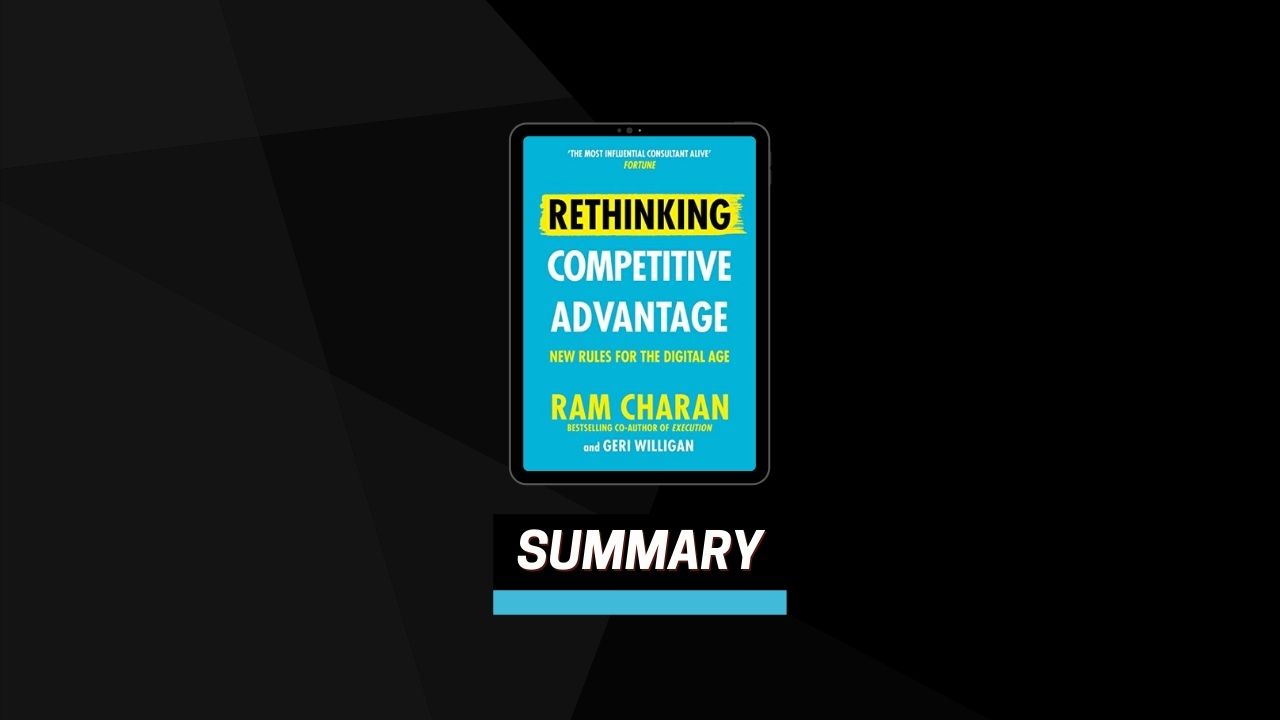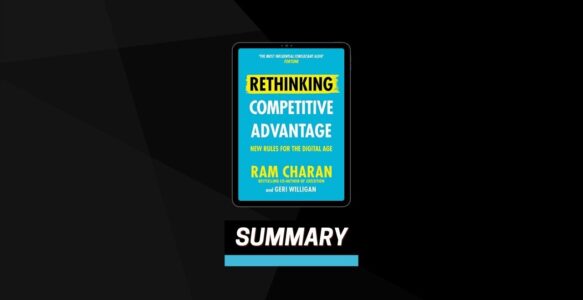Kindle | Hardcover | Audiobook
Established companies have enviable resources, brands, customer bases, talent pools, and data that digital start-ups envy. But going forward, that will not be enough. Sooner or later every company will be pitted against a digital competitor who is playing by different rules. To successfully compete, you have to know what they are and follow them.
The Roadblocks to Moving Forward
Roadblock #1 An overreliance on outdated theories.
Companies that stick too long with a narrow view of their core competence and fail to build newly required capabilities will suffer badly. Netflix and Hulu built streaming capability early. Disney, Apple, Amazon, and WarnerMedia did so many years later. Fox dragged its feet in building competence in streaming but sold its movie assets to Disney soon enough to avoid serious financial damage.
Even portfolio or capital allocation models, such as BCG’s famous matrix that sorts businesses into one of four quadrants (cash cows, stars, dogs, and question marks) based on market share and growth rate, fall short by assuming that current realities—and therefore what the business should focus on—are largely static.
Roadblock #2 A dominant psychology of incrementalism and short-term thinking.
Leaders who have built their careers in companies that are largely focused on earnings per share and market share are 100 percent focused on one year out, even if they also do three-year projections. This is partly driven by their compensation incentives.
Compare that to Netflix, where CEO Reed Hastings focuses on how many subscribers are on the platform and what their level of engagement is. He can monitor those metrics on a daily basis and make adjustments. But he is also oriented toward making decisions for the longer term. Netflix anticipated the possibility of losing access to other companies’ film and television rights and moved preemptively to start creating its own content.
Roadblock #3 Acceptance of existing boundaries.
Digital giants pay no attention to what industry they should or should not be in. They focus relentlessly on the consumer and are determined to provide a new consumer experience where they see an opening. They think in terms of a more complete end-to-end experience, which generally touches on multiple traditional industries. While Netflix streams entertainment, it also has the capability to disseminate educational products. Amazon began in retail but is also a major player in logistics, cloud computing, and advertising.
Roadblock #4 Belief in mass markets and segmentation.
Mass production was a huge generational shift from the cottage-industry era that preceded it. Through much of the twentieth century, mass production and mass markets evolved into market segments; for example, Ford’s one-size-fits-all Model T led to GM’s range of models, which every automaker has offered ever since.
Against a digital competitor, even aiming to serve a market segment might not be good enough. Leaders should strive for personalization at every touch point in the customer journey.
New World, New Rules
- A personalized consumer experience is key to exponential growth.
- Algorithms and data are essential weapons.
- A company does not compete. Its ecosystem does.
- Moneymaking is geared for huge cash generation, not earnings per share, and the new law of increasing returns. Funders understand the difference.
- People, culture, and work design form a “social engine” that drives innovation and execution personalized for each customer.
- Leaders continuously learn, imagine, and break through obstacles to create the change that other companies must contend with.
Rule #1: A personalized consumer experience is key to exponential growth.
Opportunities in the digital age can be vastly bigger than at any previous time in business history. Leaders of digital businesses recognize this potential. It’s part of their DNA to seek opportunities that they can scale up quickly. They think in terms of markets that can grow 10 times, 100 times, or even 1000 times bigger than the current market space.
Rule #2: Algorithms and data are essential weapons.
You will not be able to create a superior end-to-end experience that is personalized for each individual and at scale unless you are prepared to make algorithms and data central to your business. There is simply no way around this reality.
Rule #3: A company does not compete. Its ecosystem does.
Are you afraid that your company will be overtaken by a digital competitor? Think again. It is not the individual company that is most threatening. It is the ecosystem it forges.
In the digital age, competitive advantage goes to those who build an ecosystem, or network, that leverages digital technology for the benefit of the consumer and paves the way to multiple streams of revenue.
Rule #4: Moneymaking is geared for huge cash generation, not earnings per share, and the new law of increasing returns. Funders understand the difference.
Born-digital companies can consume a ton of cash in their early years in their high-speed race for customers, revenue growth, content, and reach. Their earnings per share—the stock market’s favorite metric—can be zero or deeply negative for years, if not decades. Yet these companies seem to have the capital they need, because some investors know what the leaders of digital companies know: that moneymaking is different in the digital age. Of course the components of moneymaking—things like revenues, cash, gross margin, cost structure, and funding—are the same as ever. But the emphasis, the patterns, the timing, and the relationships among them are different. Using these differences to create value for both the consumer and shareholders at the same time is a new kind of business savvy and a source of competitive advantage.
Rule #5: People, culture, and work design form a “social engine” that drives innovation and execution personalized for each customer.
One of the greatest and least recognized competitive advantages that today’s digital giants have over traditional players is a powerful social engine that drives their exponential growth. This social engine—which includes the company’s people, culture, and way of getting work done—has tremendous energy and speed. It eliminates bureaucracy and achieves what many companies find so elusive: the ability to continuously adapt and innovate on behalf of the consumer. Their social engines run with discipline while freeing up people’s imagination. And they create value for customers, ecosystem partners, shareholders, and employees all at the same time.
Rule #6: Leaders continuously learn, imagine, and break through obstacles to create the change that other companies must contend with.
Following the new rules without paying attention to your own leadership is dangerous. Companies are created, expanded, allowed to wither and die, or get revived by their leaders. Walmart started to digitize in 2001 but those efforts didn’t go anywhere until Doug McMillon became CEO in 2014. Microsoft was treading water until Satya Nadella took over. Larry Page and Sergey Brin created a new competitive field. So did Mark Zuckerberg. These are reminders of what should be obvious: that leadership matters to the success of a business.
We are now in a period when leaders are tested continuously against changing conditions and against each other. Digital leaders so far have an edge, not because they are younger and tech savvy but because they lead in ways that are inherently better suited to a digital company in the digital age.
Rethinking Competitive Advantage in the Real World
Use the rules to work through all the changes that must occur—for example, in moneymaking, retraining and reorganizing people, and building a new ecosystem. The prize is seeing the elements, or building blocks, of competitive advantage combine and accelerate the transition to being reborn as a digital company.
Human beings create change. New sources of competitive advantage will emerge, and the competitive landscape will shift. This is what drives human progress and our standard of living. You can be part of it.



